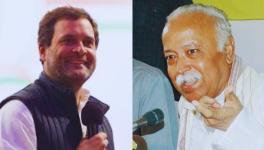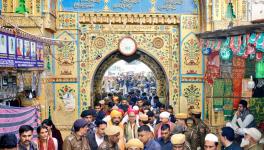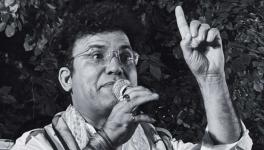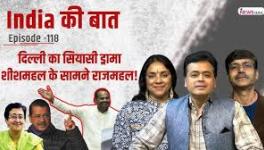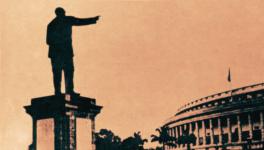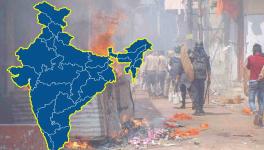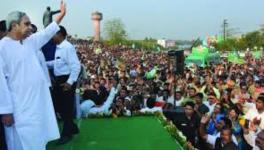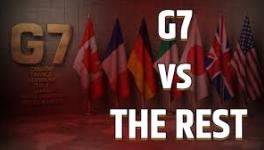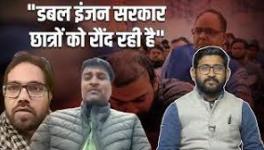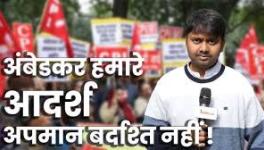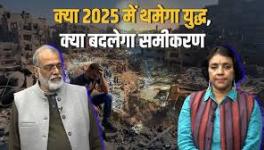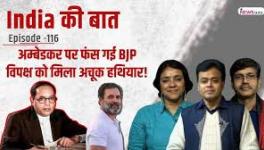How Hindu Festivals Are Being Abused to Spark Violence and Hate
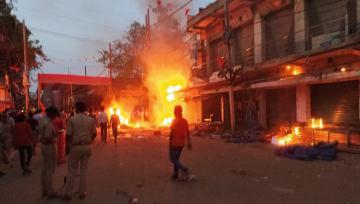
File photo of violence in Bihar Sharif during Ram Navami in 2023.
Communal violence has been the bane of Indian society with increasing intensity. While in the pre-colonial era, it was an occasional ethnic strife, from the period of British rule, it started to become a regularly occurring phenomenon. The communal historiography, looking at history through the prism of religion of the ruler, introduced by the British, was the solid base of the emergence of narratives that formed the ground for various communal streams, Muslim and Hindu.
These streams devised their own mechanisms to create a ‘social common sense’ and instigate violence in the communities, based on religion. While this phenomenon has seen an exponential rise during the past three decades, scholars, journalists, activist-researchers have made serious efforts to understand the newer mechanism to communalise the majority community and also the newer ways of initiating violence.
A dogged journalist, Kunal Purohit, in a path-breaking book, H-Pop- Inside the Secretive World of Hindutva Popstars, brings to our notice how popular culture is being shaped by songs that are spreading hatred against the heroes of the national movement, such as Gandhi, Nehru, in particular, and against Muslims. He warns us that Hindutva pop stars are adding intense hatred, particularly in the North Indian scenario.
Another important book is Weaponization of Hindu Festivals, by Irfan Engineer and Neha Dabhade (Pharos Media). Both these activists-researchers are part of the Centre for Study of Society and Secularism, by legendary Asghar Ali Engineer. This centre has constantly been monitoring and studying the nature and intensity of communal violence.
In the wake of the violence being orchestrated around Hindu festivals, particularly Ram Navami, the author duo has focused on the mechanism as to how festival celebrations have been made intimidatory and aggressive to the Muslim community, mostly leading to violence and polarisation.
As far Hindu festivals and their celebrations are concerned, from centuries they have assumed a sort of culturally integrating character. The major example of this is that most Hindu festivals were celebrated not only in the Mughal courts but were also jointly celebrated with Muslims. I do recall the Ram Navami procession in my childhood was a time to be joyous and go around the city in a procession in a festive mood.
This book is based on an in-depth inquiry into the violence instigated by religious processions as a part of celebrations of festivals, Ram Navami in particular in 2022-2023. It seriously analyses the incidents following the inquiry by the teams in which they participated. The violence covered in the book relates to Howrah and Hooghly (2023), Sambahji Nagar (2023), Vadodara (2023), Biharsharif and Sasaram 2023, Khargone (2022), Himmat Nagar and Khambat (2022) and Lohardagga (2022).
This book is relevant, as its observations can be of great help in preventing this violence by ensuring that the pattern which is coming into being should be prevented for maintaining peace among communities.
Irfan Engineer, in the introduction, points out, “Even a small Group of Hindu nationalists masquerading as ‘religious procession’ could insist on passing through minority inhabited area and provoke some youth using political and abusive slogans and playing violent songs and music, hoping that a reaction, a stone would be thrown at them. The state would do the rest by arresting a large number of members of a minority and demolishing their homes and properties within days without any judicial procedure.” (Page 24)
What needs to be understood for prevention (of violence) is that most of the time these processions, which are well armed; deliberately decide to pass through Muslim majority areas, with loud music and provocative and abusive slogans. It has become a pattern that someone will climb over the mosque and replace the green flag with saffron flag and the crowds down below dance and applaud.
Such a phenomenon has seen a boost particularly after 2014 with the Bharatiya Janata Party (BJP) government coming to power at Centre. The Khargone incident is very revealing in this regard. A minster of the Madhya Pradesh government said stones were thrown on the procession, which came from Muslim households, so these households are to be turned into stones. Now these hooligans and organisers of such programmes feel that ‘it is their government’ as the popular phrase says, “Sainya Bhaye Kotwal to dar Kahe ka” (If your husband is chief police officer, why be afraid of anything).
In addition to Ram Navami, other local religious yatras (processions), Ganga Aarti, (prayer for river Ganges), satsangs (religious meetings) and other religious programmes are being started with similar goals. The example of Kanwad Yatras (the holy pilgrimage to collect Ganges water and to be offered to Lord Shiva) is another example where the participants become aggressive.
To add salt to the injury, the Uttar Pradesh and Uttarakhand government (both BJP-ruled) issued orders that all stalls and eateries on the path of the Kanwad Yatra should display the name of the owner on the boards so that the Kanwadiyas (participants in the pilgrimage) can avoid those owned by Muslims. Fortunately, the Supreme Court put a stay on the orders.
Such violence is intensifying the prevailing fear in the Muslim community. It is deepening polarisation and aggravating the atmosphere of fear. Festivals, times to enjoy and celebrate, are being used to instil fear and violence. The book is very relevant as it calls upon the State to take measures by anticipating the moves of communal organisations planning such processions. Carrying arms and use of loud music with songs abusive to the minority communities have to be stopped by administration. This is very much within the law, as we have laws to punish those spreading hatred. The use of DJs can be prohibited. The State has a crucial role to play in preventing this ghastly rise in denigrating religious festivals.
A proper inquiry and suitable punishment to culprits is a must in addition to compensating the victims. Finally, we need to start community programmes for unity and amity, through cultural programmes and popularisation of films and videos promoting harmony. In the foreword to the book, Tushar Gandhi, great grandson of Mahatma Gandhi, emphasises that we need to reach the messages of Mahatma Gandhi time and over again to bring sanity to our society. This is so pertinent and crucial in present times.
The writer is a human rights activist, who taught at IIT Bombay. The views are personal.
Get the latest reports & analysis with people's perspective on Protests, movements & deep analytical videos, discussions of the current affairs in your Telegram app. Subscribe to NewsClick's Telegram channel & get Real-Time updates on stories, as they get published on our website.









